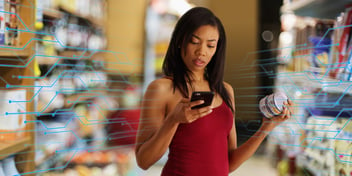Why Should Retailers Still Accept Cash?
Cash in retail is a pain in the rear. Yet, consumers insist on using it for their small-dollar purchases.
Today, cash is a common payment for public transportation, personal care items, parking fees, groceries, fast food, coffee, and snacks. And cash use has risen post-COVID to 20% - the first increase in cash use since 2016, according to the Federal Reserve.
But why? Cash use slows down lines at the register and takes up wallet space. Isn’t it easier for customers to insert or tap?
Why are consumers still using cash?

There are a variety of reasons people are continuing to pay with hard currency, despite a growing number of “more convenient” digital options. Gen Z (1996-2012), a generation that is increasingly budget and finance conscious, is focused on cash as a tool to control spending. Around one-third of Gen Z have resorted to cash as a way to monitor their budgets and curb expenditures.
But saving money is not the only reason consumers are steering clear of digital payments for small purchases. Cybercrime has risen 81% globally since 2020, according to a McAfee Enterprise and FireEye report. Where digital information can be stolen and used to gain access to accounts and personal data, physical bills offer a safe alternative that protects customer identity and prevents exposure.
However, some consumers have little choice but to use cash as their main form of payment.
Unbanked and Underbanked consumers have to use cash.
There are many reasons for someone to not have a bank account. The biggest is, of course, a lack of money. Households that are struggling financially often have difficulty meeting minimum bank balance requirements or paying account fees. For these individuals, overdrafts or other fees could easily mean missing a meal or not being able to put gas in their vehicle.
Even worse, having a bank account too soon could cause further damage. A history of bounced checks, overdraft fees, or other problems can damage your credit history and make it even more difficult to open bank accounts, apply for loans, or get a job.
And many who have previously experienced banking issues lose their trust in a banking system that was more focused on earning money than on taking care of account holders. Negative experiences can leave a lasting impression and now, even if they are capable of opening an account, some consumers may choose other means to manage their finances.
Today, it is estimated that 5.4% of the US (around 7.1 million households) are unbanked. Another 16.3% of households are considered underbanked – where individuals have bank accounts but often rely on other services like money orders, prepaid cards, or even payday loans. However, the number of unbanked and underbanked households has a history of fluctuating based on the US economy and many experts are concerned that the current economic environment may lead to an eventual increase as inflation continues to squeeze consumers.
Why should convenience stores and retailers still accept cash?
The connection between lower-income, unbanked, and underbanked households with cash payments is further supported by the Federal Reserve Bank’s Diary of Consumer Payment Choice in which cash use deteriorates as income rises. Households making $75,000 or more per year use cash for 22% or fewer of their purchases. Those numbers rise dramatically for households making $50,000 or less – to 41% or more.
Despite how cumbersome cash management can be, choosing to go cash-free could prove even more detrimental to retailers – inconveniencing a large portion of current and potential customers.
Rather than denying cash use, convenience stores, grocery, and other retailers are better off looking at cash from a completely new angle – as a way to PULL IN foot traffic and increase store spend – through advanced, multi-function ATMs and financial services technologies...like Cash Depot's BANK IN A BOX.
Today’s financial machines can provide a wide range of services beyond simple cash dispense including person-to-person payments, cardless transactions, money transfers, cryptocurrency purchases, and much more. The expanded functionality of these “next gen” ATMs can help customers of all ages and incomes manage their money better and bridge the gap between physical and digital payments – all while pulling in more foot traffic and putting more money in merchant pockets.




